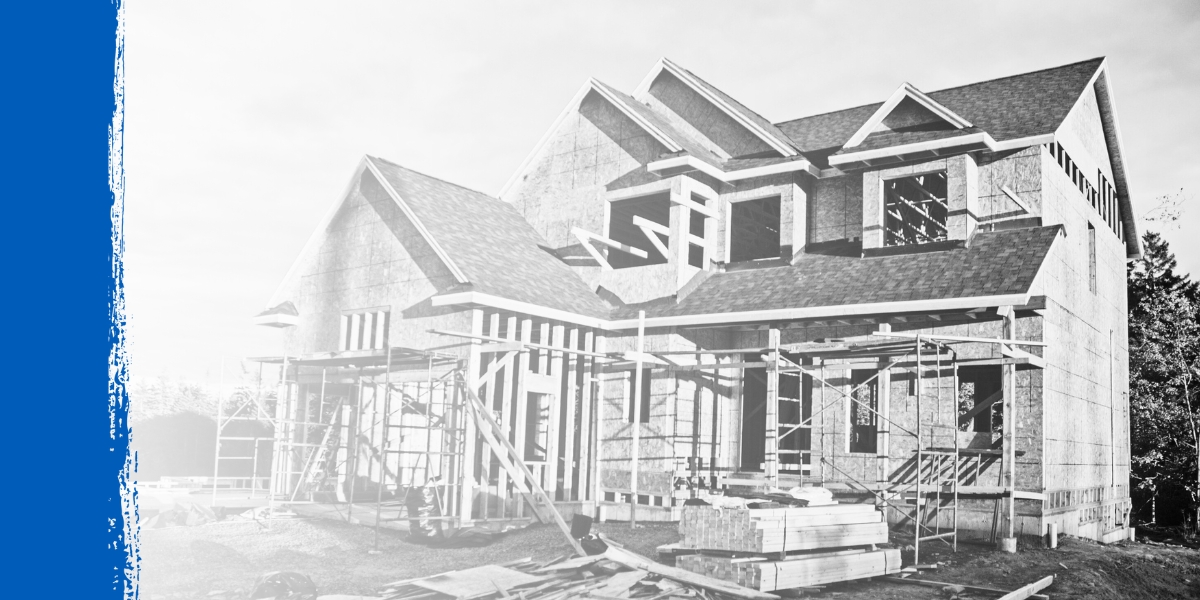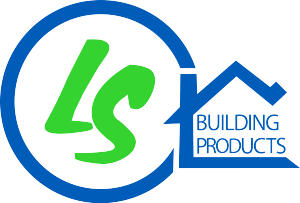Understanding the key structural components of a building is essential for contractors and general builders alike. Trusses and joists are two of the most critical elements in any construction project. These parts form the backbone of residential and commercial structures, providing stability, support, and design flexibility.
In this post, we'll discuss important structural terms like roof trusses, floor joists, and headers and their impact on building projects. We'll also explore the materials used, typical costs, and the time to install these components.
Table of Contents:
- Roof Trusses
- Floor Trusses
- Roof Joists
- Floor Joists
- Headers
- Other Structural Components
- Trusses and Joists FAQs
Roof Trusses
A manufactured truss is an engineered structural component assembled from wood members, metal connector plates and other mechanical fasteners. The truss members form a semi-rigid structural framework and are assembled such that the members form triangles. Trusses are designed to engineering standards with a substantial factor of safety applying to every truss in the roof. Most builders are familiar with roof truss systems but may not realize the advantages of a manufactured system. Traditional stick-built roofs which are based on historical conservative carpentry practices, use greater quantities of lumber to achieve acceptable factors of safety. The reserve strength of these traditional roofs is also variable and depends on the skill of the individual carpenter. The benefits of manufactured wood truss systems are many. Trusses can span great distances, creating larger open spaces below unobstructed by columns and partitions. Roof truss systems are manufactured in controlled environments, so there's less chance of warping, shrinking, and twisting of lumber. Trusses also save timber resources by reducing the amount of wood waste generated during construction. The owner can enjoy piece of mind knowing that the trusses have been professionally engineered and quality manufactured for that specific job
- Materials: Roof trusses are generally constructed from high-grade Spruce-Pine-Fir (SPF) lumber, known for its strength and light weight, combined with metal plates for joint reinforcement, other species can be used as required to meet design. Some trusses can also incorporate engineered wood, like laminated veneer lumber (LVL), for added durability in larger or more complex builds.
- Timeline: Trusses are delivered to the site ready to be installed. Labor is saved because trusses can be installed three to four times faster than it would take a carpenter to build the roof on-site. The open space in the trusses allows duct work, plumbing and wiring to be installed quickly and easily. Construction costs also are reduced because the building is “closed-in” faster, there is less pilferage of materials, and it takes less time to clean up the site.
- Peace of mind: Knowing that the trusses were professionally computer-designed, engineered and factory-built to assure the highest quality and reliability.
- Versatility: That means designs can include vaulted or studio ceilings inside the home and high pitched or hipped roofs on the exterior, offering greater aesthetic and functional advantages.
Floor Trusses
Floor trusses can span great distances, creating larger open spaces below unobstructed columns and partitions. Truss systems are quicker and easier to install than traditional floor joists, and because they're manufactured in controlled environments, there's less chance of warping, shrinking, and twisting of lumber. The consistent size and height of the manufactured floor joist will mean easier sub-floor material installation, and the open web design allows for utilities to be run through in the floor system without drilling or cutting holes. These benefits will reduce the amount of time trade contractors, like plumbing and HVAC, spend on site, speed up construction, and ultimately save the builder money. Manufactured floor truss systems also save timber resources by reducing the amount of wood waste generated during construction.
- Materials: Floor trusses are generally constructed from high-grade Spruce-Pine-Fir (SPF) lumber, known for its strength and light weight, combined with metal plates for joint reinforcement, while the open-web design allows for easy integration of electrical, HVAC, and plumbing systems. In larger projects, laminated veneer lumber (LVL) may be used for additional structural integrity. The wide (3 1/2"), nailable top and bottom chords speed placement of decking and ceiling material without the need of special fasteners or clips.
- Timeline: Floor trusses can be installed within 1-2 days for a typical residential structure. Floor trusses are delivered to your site, ready for installation. Minimal cutting or fitting is required. Strong, lightweight and rigid Floor Trusses go up easily and quickly. Often without the use of a crane.
Roof Joists
Roof joists are horizontal structural members that support the roof, providing the framework for the roof’s load-bearing structure. They distribute the roof's weight evenly across walls and load-bearing beams.
- Materials: Roof joists are commonly made from dimensional lumber, such as 2x6 or 2x8 boards, but engineered wood joists like I-joists and laminated veneer lumber (LVL) are also frequently used. Steel joists may be used for larger or commercial projects due to their superior strength and ability to span greater distances.
- Timeline: Roof joist installation can take 1-2 days, depending on the project's size and the roof design's complexity.
Floor Joists
Floor joists are horizontal structural members that support a building's floor. They ensure the floor remains stable, preventing sagging or bouncing. Joists are also important because they provide plumbing, HVAC, and electrical installation space.
- Materials: Most floor joists are made from traditional solid lumber, like 2x10 or 2x12 boards of Southern Yellow Pine or Douglas Fir, known for their strength and ability to support the weight of flooring and substructures. In modern construction, engineered wood joists such as I-joists or laminated veneer lumber (LVL) are commonly used because they allow longer spans without sagging. Engineered wood is also dimensionally stable, which resists warping and shrinking over time. These materials are especially beneficial in larger buildings or homes with open-concept designs.
- Timeline: Installation takes 2 to 3 days, depending on the building's size and complexity.
Headers
Headers are horizontal beams placed over doorways, windows, and other large openings. They bear the load above the opening, distributing the weight to adjacent structural components.
- Materials: Headers are traditionally made from solid wood Douglas Fir or Southern Yellow Pine beams, which can support significant loads across openings such as windows and doors. In larger or more complex structures, laminated veneer lumber (LVL) or glulam beams are used for their superior strength and ability to span longer distances without bending or warping. Steel headers are often installed in commercial or industrial settings to support the heavy loads of multi-story buildings. Steel provides excellent durability and can handle higher stress loads than wood.
- Timeline: Installation of headers usually takes a few hours for smaller openings, but larger, steel-supported openings can take up to a day.
Other Key Structural Components
Wall Panels
Wall panels are prefabricated sections of a wall that are constructed off-site and then assembled on-site. These panels reduce construction time, material waste, and labor costs while maintaining structural integrity. Wall panels also offer more consistent manufacturing quality than site-built stud walls, making them an efficient choice for modern construction.
- Materials: Wall panels are typically constructed from dimensional lumber, such as Spruce-Pine-Fir (SPF), and often include OSB or plywood sheathing for added rigidity. Some panels incorporate engineered wood products for greater strength and durability. Insulation and moisture barriers may also be integrated during manufacturing.
Beams
Beams are horizontal load-bearing components that support floors, ceilings, and roofs by distributing weight to columns or walls. Critical for load-bearing walls and large openings, they are often found in large spans, such as open floor plans, to maintain a building’s stability.
- Materials: Beams are typically made from dimensional lumber, engineered wood like LVL, or steel. Engineered wood and steel beams are preferred in modern construction due to their superior strength and ability to span large distances without additional support.
Rafters
Rafters are sloped structural members that extend from the ridge or peak of the roof to the exterior walls. Unlike trusses, rafters are usually site-built and can provide greater design flexibility, although they require more labor and materials.
- Materials: Rafters are typically constructed from dimensional lumber, such as 2x6 or 2x8 boards. In some cases, engineered wood allows for larger spans without sagging.
Trusses and Joists FAQs
Can I use engineered wood for roof trusses?
Yes, engineered wood can be used, especially for custom designs requiring longer spans. It provides excellent strength and is less prone to warping than traditional wood.
Are metal roof trusses better than wooden ones?
Metal trusses offer superior strength and durability, making them ideal for large-scale projects. However, they are more expensive than wooden trusses.
How long do wood joists last?
With proper maintenance, wood joists can last decades, though exposure to moisture and pests can shorten their lifespan.
Can I install floor joists myself?
While experienced DIYers can install floor joists, we recommend hiring a professional for optimal safety and to ensure compliance with local building codes.
What’s the difference between a truss and a joist?
A truss is a prefabricated structure that consists of a network of triangles, typically made of wood and steel, designed to distribute weight evenly. A joist, by contrast, is a single horizontal beam that directly supports floors or ceilings. While trusses are more common in roof framing, joists are typically used in both floor and roof support systems. Trusses provide more complex structural support, whereas joists offer straightforward, direct load-bearing capabilities.
Get the Best Structural Materials from LS Building Products
LS Building Products provides contractors and builders with top-quality materials for roof trusses, floor joists, headers, and more. Whether constructing a new home or remodeling a commercial building, we have everything you need for success.
Ready to build? Contact LS Building Products for all your structural needs, or get a custom quote today!
.png?width=98&height=67&name=Logo%20(13).png)
.jpg) Trusses and Joists: A Builder's Guide to Structural Terminology" loading="lazy">
Trusses and Joists: A Builder's Guide to Structural Terminology" loading="lazy">
.jpg)




